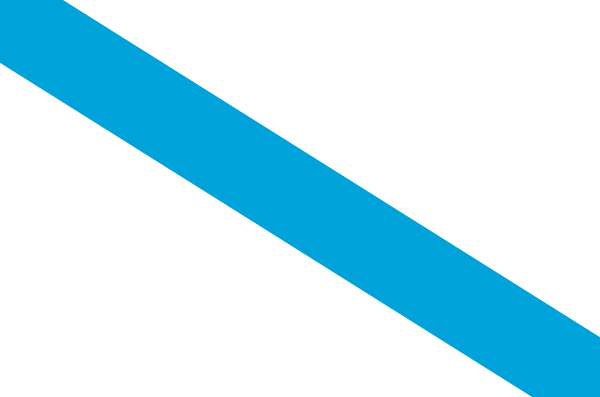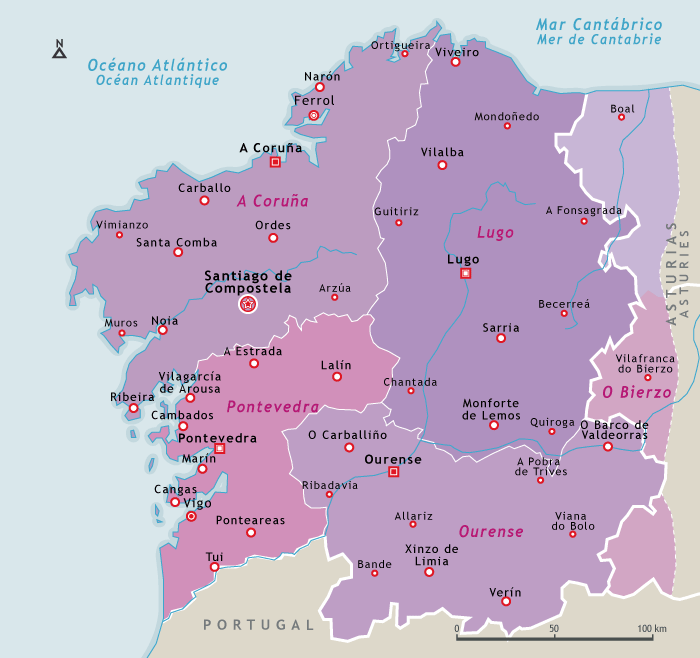Galicia, between Celtic and Iberian cultures

Galicia is an autonomous Spanish community defined as a “historic nation”. It is situated at the north-western tip of the Iberian Peninsula.

Galicia distinguishes itself from Spain linguistically, historically and culturally. Its peripheral location has often spared it from significant assimilation. Galician, a Romance language, is related to Portuguese. The differences between the two languages are explained by a political context and different economies.
The oldest people known in Galicia are the Oestrimnis (people of the north-west), of which few archaelogical traces remain. In the 1st century BC, the Celtic people arrived. Following that, under Roman rule, the territory took the name Gallaecia. The country was alternately ruled by the Suevi, the Visigoths and the Arabs. From 711, Gallicia embarked on alliances with neighbouring principalities began: Asturias, Léon and Castille. In this century the oppression of Galicia began, which the chronicles of time will eventually call “the taming and castration of the kingdom of Galicia”.
Galician, a language of medieval lyricism, disappeared from all official documents. Over three difficult centuries, cultural and political movements struggled. During the 1st Spanish Republic, a project for the future of the Galician state was developed. Overwritten during the Franco dictatorship, the Galicians turned more and more towards separatist movements, which are struggling to catch up economically due to their peripheral location.
Although Galician is now used more and has the support of some media (newspapers, televisions), Castilian holds greater importance, endangering a fragile balance of languages.

Identity card

| Name | Galiza | Galician Galicia | Castilian |
| Population | 2,830,000 inhab. (2007) |
| Area | 33,277 km² |
| Languages | Galego | Galician Castellano | Castilian (official) |
| Number of native speakers | 2,400,000 | Galician (2005) |
| State of guardianship | Spain |
| Official status | Autonomous community |
| Capital | Santiago de Compostela | Galician, Castilian |
| Historic religion | Roman Catholic |
| Flag | Bandeira de Galiza | Galician (Flag of Galicia) |
| Anthem | Os Pinos | Galician (The Pines) |
| Motto | None |

Timeline

- 3rd century • The Roman emperor Diocletian creates the Province of Gallaecia.
- 411–585 • Kingdom of the Suevi of Galicia (period of prosperity).
- 559–570 • The Suevi king Theodemir divides the country into dioceses and provinces.
- 815–830 • Discovery of the tomb of St John the Apostle. Compostella becomes one of the biggest Christian centres for pilgrimage.
- 12th–13th century • Period of splendour for Galician literature.
- 1431 & 1467–69 • Antiseigneurial revolts of the Irmandiñas (bourgeoisie, clergy and country people).
- 1622 • Re-establishment of Galician sovereignty following the 275 year supremacy of the Castilian town of Zamora.
- 19th century • The Rexurdimento, artistic and literary rebirth.
- 1980 • Approval by referendum on the status of the autonomy of Galicia, recognising Galician nationality.

Geography

Galicia lies at the tip of the Iberian Peninsula. Surrounded by the Atlantic Ocean to the north and west, it borders the Asturias to the east and Portugal to the south, a country that it shares a common linguistic heritage with as well as privileged cultural relations. Divided into four provinces (shown on the map), the historic territory of Galicia extends east, officially into Asturias and Castile and León, where a part of the population still uses Galician. Made up of a number of villages, the population is spread over the territory. It is concentrated on the coast, in particular in the villages of La Corona and Vigo, the economic centres of the country. The better-known Santiago de Compostela, the cultural capital of Galicia, stretches far beyond the border of the country. The Pena Trevina reaches 2,124 m.



Politics now

Galicia has its own assembly with broad powers. The political life of Galicia has long been marked by Manuel Fraga Iribarne, head of Galicia from 1989 to 2005. A former minister under the Franco dictatorship and an ultra-conservative, he is one of the emblematic figures of the Popular Party, which is ultra-conservative. This paradoxical period is now over. Indeed, a coalition between the Socialist Party (PSOE) (32.5% of votes) and the Galician Bloc (19.6% of votes) has reversed the spiral of Galician conservatism. The Bloque Nacionalista Galego could now have a vice-president in the Xunta de Galicia (parliament).
The most representative Galician parties
- Bloque Nacionalista Galego / Nationalist Bloc of Galicia (BNG) (Progressive separatist)
- Esquerda Unida / United Left (Radical left)
- En Marea / At tide (Radical left)

